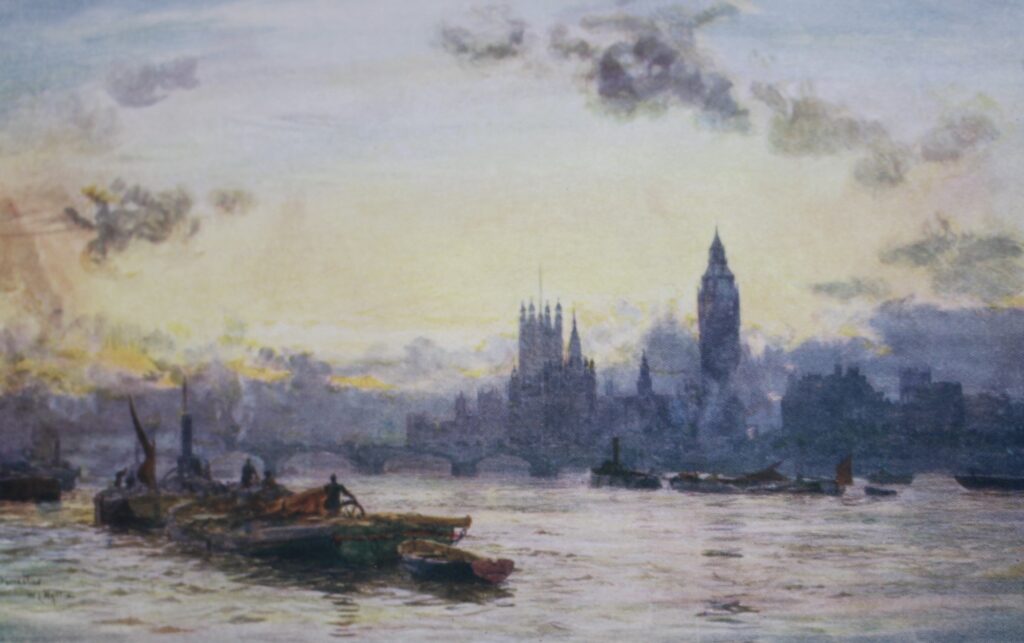
A look back to early 20th-century images of theThames in the company of W. L. and Mrs Wyllie through their book London to the Nore, published in 1905.
William Wyllie was a well-known and distinguished marine artist who lived from 1851 to 1931. Born in Camden, London, son of artist William Morrison Wyllie, his talent was recognised when young, winning the Turner Gold Medal when he was only eighteen. In 1889 he was elected an Associate of the Royal Academy. An enthusiastic sailing fan from his early youth, he was drawn to maritime subjects, painting and etching all kinds of boats from large naval vessels to fishing and sailing boats, which he was said to have executed in accurate detail. However, The Royal Naval Museum notes that: “It was his etchings and watercolours showing working life on the Thames and the Medway that brought him widespread popularity.” And reading this beautifully illustrated book you can see why.
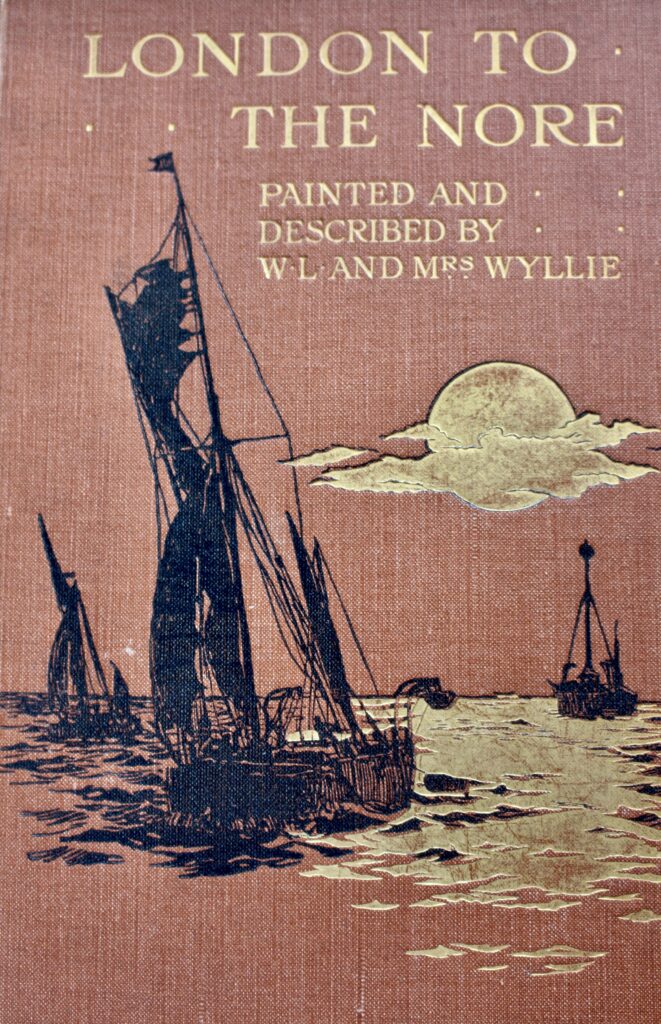
The text written by Mrs. Marion Wyllie, describes sailing and being towed up the river to their starting point at Westminster for the journey back downstream to the Nore. Marion Wyllie’s engaging style with its blend of history, knowledge of the river and boats, and details of family life aboard bring readers close to their experience.
An example of this might have some resonance today… One evening, after an outing ashore where she came across a thieves’ lodging house, which was still occupying her thoughts, she “became aware of a slight sound on the other side of our hull.” Her husband was asleep, and her sons busy talking had evidently heard nothing, she writes, “So I get up without noise and cross the deck, kneeling by the bulwarks and peeping over. The water is in deep shadow under our side, and at first I can see nothing; then I am sure I hear a whisper, and see something dark that I make out to be a boat close to our lee-board.” She wakes her husband who calls out “Hullo! What are you doing there? A very respectful voice answers ‘We are the water-police, sir, on the lookout for some men who have been stealing coal from this tier. I hope you don’t mind us holding on, as this bit of shadow is an advantage to us. Some of us will be here all night: so you will be all right.’ She adds that “with a great sense of security” everyone returned to their cabins.
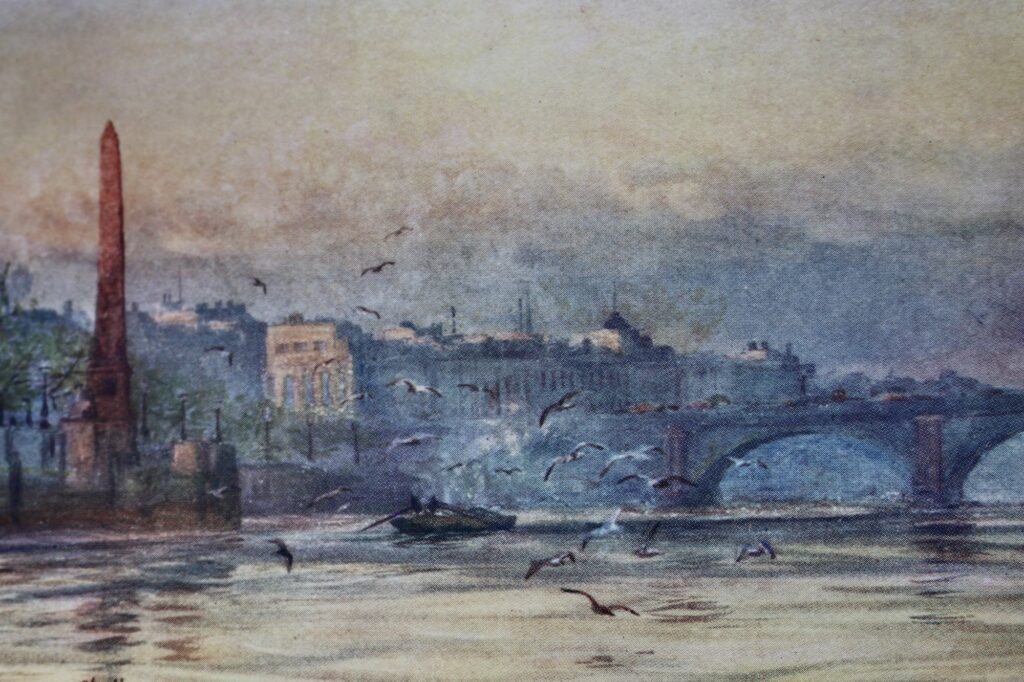
For around twenty years from the early 1870s, Wyllie was a regular contributor to the weekly illustrated magazine The Graphic, for which he drew black and white illustrations of all things maritime. He spent time at sea working for the White Star shipping line and served with the Royal Navy during the First World war spending a month on H.M.S. Revenge at the time of the Armistice in 1919.
But it was, as mentioned above, his series of etchings of the Port of London, its commercial and industrial life and the movements and variety of shipping, that really brought him to the attention of a wider and appreciative public.
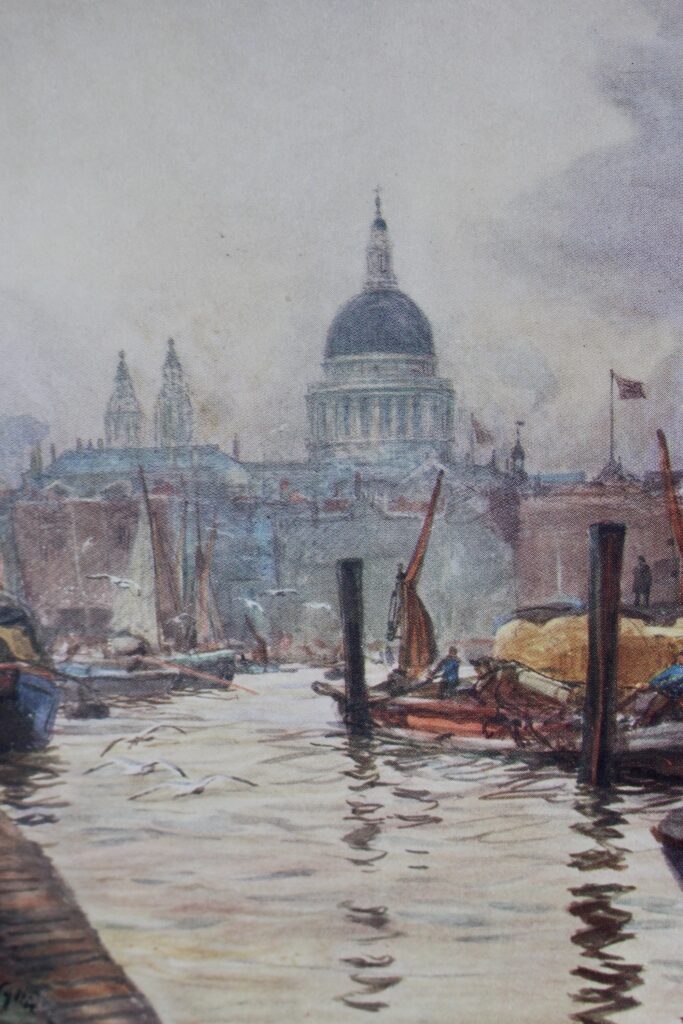
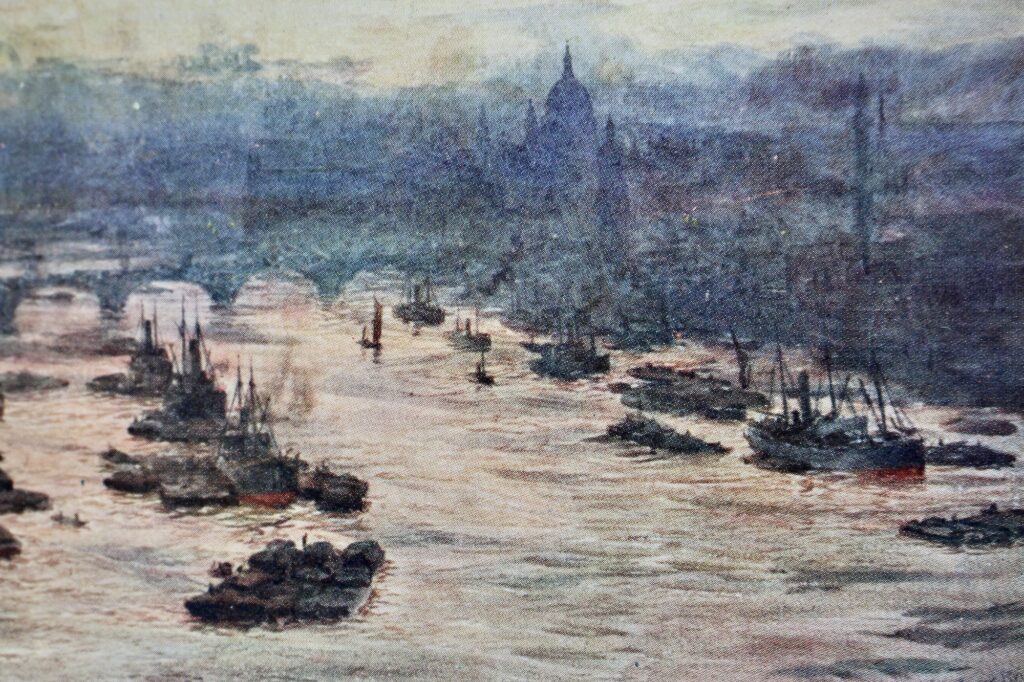
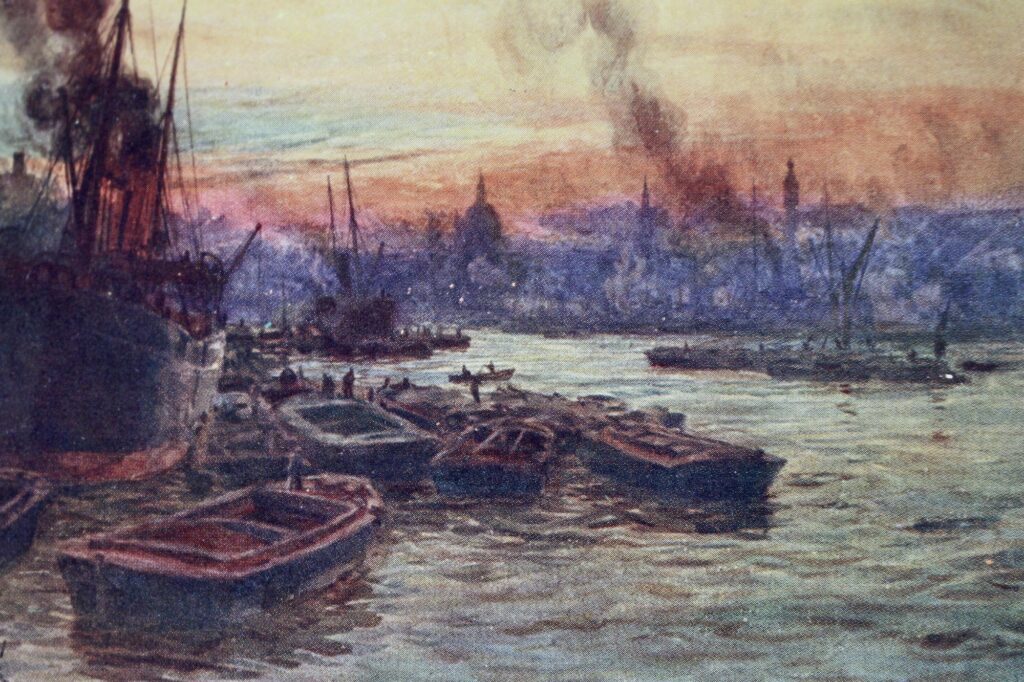
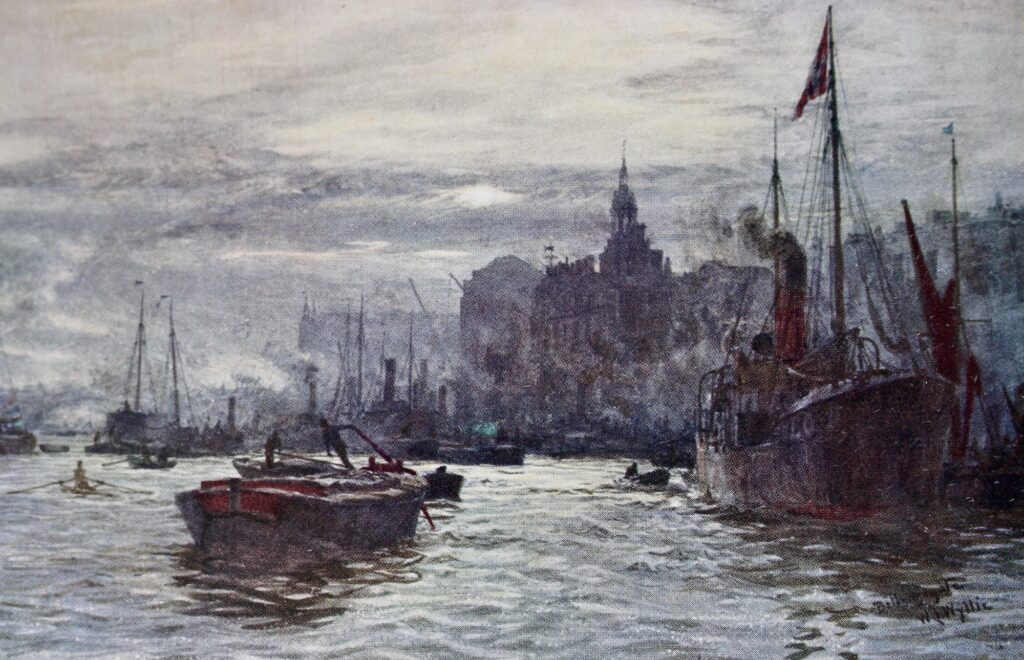
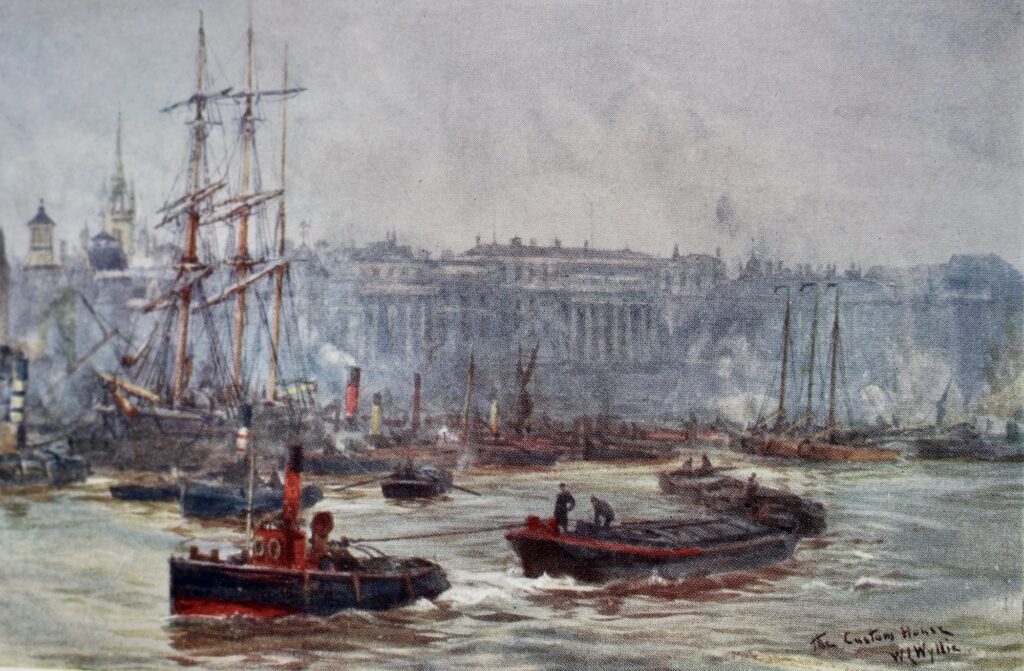
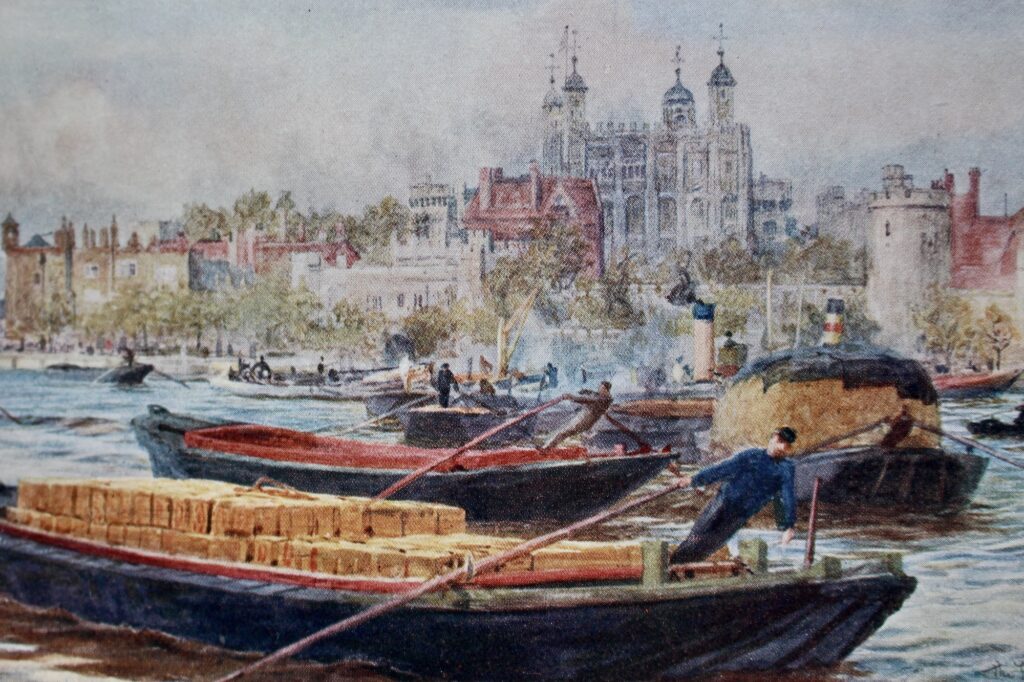
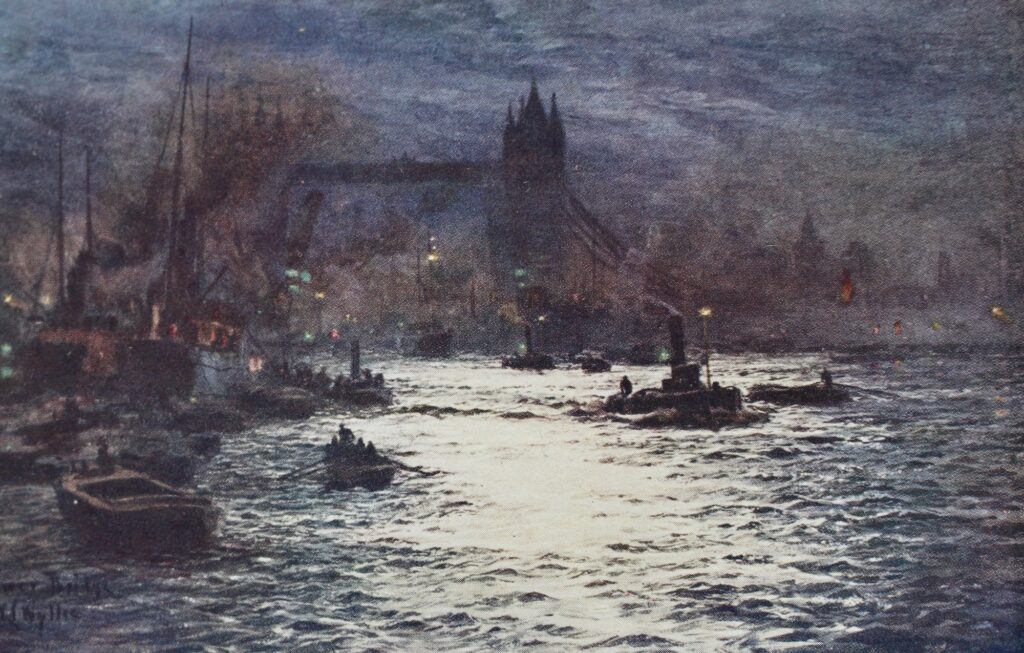
Wyllie moved to Portsmouth in 1906 and became closely involved with the restoration of H.M.S. VICTORY, organising campaigns to raise the funds to move her into dry dock and overseeing the work on her preservation. He died in 1931 and was laid to rest with full naval honours at Portchester Castle.
William Wyllie had lived life to the full. In the foreword to W. L. Wyllie: marine artist: 1851-1931, published in 1981, Sir Hugh Casson wrote of Wyllie’s love of boats. “He designed them, cared for them sailed them and above all he never ceased to draw and paint them in every size and shape and in all weathers.” He adds that Wyllie drew them “accurately, affectionately and above all with deep practical understanding.”
In articles that follow their journey from Tower Bridge, I will post further images and occasional anecdotes from Marion Wyllie’s account of their journey from Westminster to the Nore.
Sources and further information
National Maritime Museum, Greenwich
Oxford Dictionary of National Biography
The National Museum of the Royal Navy
We Were One, 1935, a biography of W.L. Wyllie by his wife M.A. Wyllie
W.L. Wyllie: marine artist, 1981 by R. Quarm and J. Wyllie